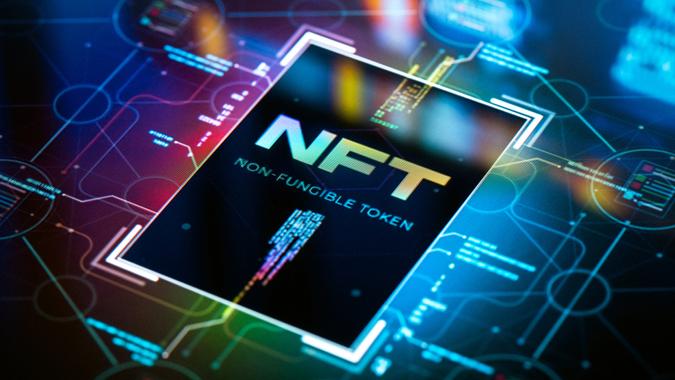How do you make an NFT?

da-kuk / Getty Images
When you create a non-fungible token (NFT), you establish ownership of a digital asset or collectible online – and if the world loves it, the right NFT can earn you a bundle of money.
See our list: 100 most influential money experts
Small Business Spotlight 2022: Nominate your favorite Small Biz by July 25th
Vignesh Sundaresan – aka MetaKovan – bought “Everydays: The First 5000 Days” from Beeple for $ 69.3 million, according to Nasdaq. Pak’s “The Merge” has around 28,000 co-owners who paid a total of $ 91.8 million for the small piece of digital data.
Will one of your own creations ever earn you enough money to immediately throw you into the ruling class? It is possible, but highly unlikely.
However, you may have a realistic goal of creating an NFT that earns you a few dollars or more – or you may just want to start a collection, have something to swap, or just learn how to publish your digital works to the blockchain.
Whatever the cause or goal, keep reading to learn the basics of creating your own NFT.
Know what you are getting into
If you are already in the pre-minting stage, chances are you already know your NFT ABCs. Still, the first step to creating an NFT is to take a deep dive into what is required, what it costs and what to expect along the way.
Check out: 6 alternative investments to consider for diversification in 2022
Did you know, for example, that gas charges – mandatory blockchain transaction fees that fluctuate based on network traffic – were quite reasonable before 2020, but now represent one of the biggest barriers to entry, according to NFT Now?
That’s just the beginning. There is a lot to consider. Learn as much as you can about creating NFTs before you embark on your next million-dollar masterpiece.
Decide what to lay down for eternity
You can convert just about any digital file into an NFT, provided you own it and no one else can claim its intellectual property rights. It includes:
- Pictures
- Drawings, paintings and other works of art
- Music
- Videos
- Tweets and other online content and statements
- Memes
- Video games Easter eggs
- GIFs
But according to The Verge, “your first NFT should probably be a picture, video or audio clip of some kind.”
This is because you will be limited to the formats that the marketplace embossing tools support, and they are the most common.
Select a blockchain
The potential and popularity of NFTs is rooted in the fact that they “cannot be counterfeited, replaced, replicated or hacked in any way,” according to Sensorium.
To achieve this level of security and transparency, NFTs rely on the same open-ended blockchain technology as cryptocurrency. The artwork or what is in the file itself is almost never written into the blockchain, according to The Verge. The only thing stored in the blockchain is a link pointing back to what NFT represents and a token that provides proof of ownership.
“Ethereum and Solana are best known for NFTs,” said Stefan Ristic of BitcoinMiningSoftware.com. Ristic also named Cardano a top blockchain choice for NFT creators.
Choose a marketplace
Marketplaces are online platforms where users store, view, buy, sell, exchange and of course create NFTs.
Different platforms and marketplaces use different blockchains. Solsea, for example, is dependent on the Solana blockchain.
However, the vast majority of marketplaces are based on Ethereum because the vast majority of NFTs are characterized by the Ethereum blockchain. Some marketplaces cover several blockchains.
Among the most popular marketplaces are Nifty Gateway, OpenSea and Rarible.
Set up a digital wallet
You will need to set up a digital wallet if you have not already done so because you will need to use cryptocurrency to pay for the creation of your NFT. You will also use your wallet to buy, sell and store any future NFTs.
The most popular among the many available digital wallet options include:
- MetaMask
- Coinbase wallet
- Alpha wallet
The next step is to add cryptocurrency to your wallet – just make sure it is the preferred crypto you choose. Ethereum-based marketplaces, for example, are guaranteed to accept Ether.
Upload your file and go to Minting
Technological veterans can create their own NFTs directly on the blockchain, but lay people should stick to the simple embossing tools that their marketplace offers. You start by uploading and creating a file that contains the object of the NFT that is compatible with your marketplace. When you connect to your crypto-containing digital wallet, you will be able to publish your NFT. Publishing – or embossing – occurs when your NFT receives its unique metadata and registers on the blockchain.
Just follow the marketplace’s step-by-step embossing instructions.
What’s next for your NFT?
Now that your NFT is embossed and published, what do you want to do with it? CoinMarketCap suggests that you consider adding a smart contract to your NFT, which can add value by creating terms and conditions.
All that remains to be done now is to list your NFT for sale and bring in millions. According to Motley Fool, you can either sell your NFT at a fixed price or put it up for auction. If you decide to bid, you can choose a timed auction, which expires after a predetermined period, or an unlimited auction, which you can close at any time.
Remember that while it is possible to be the next NFT gazillionaire, many NFTs never sell – or never sell for enough to put creators back in the black after the fees that were accrued by imprinting them in the first place.
More from GOBankingRates



